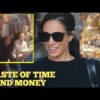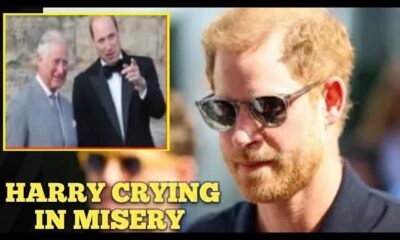The News
Prince Harry and Meghan Markle’s Unfulfilled Royal Vision: A Six-Month Plan That Never Was
In a recent revelation, royal author Tom Quinn shed light on the ambitious yet ultimately unfulfilled plan that Prince Harry and Meghan Markle had for their future within the monarchy.
The couple envisioned a unique approach to balancing their royal duties with an independent lifestyle, which would have seen them splitting their time between the UK and the US.
However, this vision faced significant resistance from the traditional structures of the British royal family.
According to Quinn, Harry and Meghan's plan was not merely about logistics; it was a strategic move aimed at maintaining their public appeal, especially in the competitive American market.
They hoped that by keeping one foot in royal life, they could preserve the allure of their brand.
Yet, this idea clashed with the strict traditions upheld by the late Queen Elizabeth II, who firmly believed in the necessity of clear boundaries between royal responsibilities and personal pursuits.
The couple's decision to step back from senior royal duties and relocate to California in 2020 marked a dramatic shift in royal history.
Initially, they expressed a desire to carve out a progressive role that would allow them financial independence while still supporting the royal family.
However, their proposed “half-in, half-out” model was swiftly dismissed.
The Queen maintained that royal duties demanded full-time commitment, leaving little room for negotiation.
Since their departure, Harry and Meghan have pursued various independent ventures, including lucrative deals with platforms like Netflix and Spotify, as well as Harry's memoir, “Spare.”
Despite these efforts, tensions between the Sussexes and the royal family have only intensified, fueled by public accusations and private grievances.
Quinn noted that the couple initially believed their exit could involve a more flexible arrangement.
The plan they envisioned would have allowed them to dedicate six months each year to royal responsibilities while spending the other half in the United States on personal projects.
This dual approach was not only practical but also strategically designed to maintain their connection to the royal brand, which remains vital for their global appeal.
For Prince Harry, being part of the royal family has always been a defining aspect of his identity.
His royal heritage has captivated many, particularly in America, where his title adds to his intrigue.
Quinn emphasized that the American audience likely preferred Harry retaining his royal role, as it was integral to his public persona.
Meghan, too, faced high stakes.
As a former actress, she has worked hard to establish herself as a prominent public figure.
However, her ties to the royal family have undeniably amplified her platform.
Quinn highlighted Meghan's concerns about potentially losing public interest if they distanced themselves from their royal roots, revealing the pressure she felt to maintain their visibility.
After Queen Elizabeth II passed away in September 2022, some speculated that King Charles III might adopt a more modern perspective on royal duties.
Yet, he has shown little inclination to deviate from his mother's policies, firmly upholding the stance that there is no place for a half-in, half-out arrangement.
This commitment aligns with Charles' vision for a streamlined monarchy focused on a smaller group of senior royals.
The relationship between the Sussexes and the royal family remains strained, with significant family events highlighting the ongoing divide.
While Harry attended both the Queen's funeral and King Charles' coronation, Meghan's absence spoke volumes about the lingering tensions.
Public criticisms from the couple regarding issues such as neglect and racism have complicated any chances for reconciliation.
Quinn painted a rather bleak picture of the current family dynamics, stating that any potential for mending fences seems unlikely in the near future.
Since stepping back from royal duties, Harry and Meghan have faced the challenge of redefining themselves while striving to remain relevant in the public eye.
Their media projects have garnered attention but also criticism, with some arguing that their success relies heavily on their royal connections.
As they navigate their new lives, questions arise about the sustainability of their brand without the royal backing that once defined them.
Meghan's attempts to reposition herself as a lifestyle influencer have met with mixed results, and observers note that their appeal remains closely tied to their royal heritage—a double-edged sword that both elevates and constrains them.
As Prince Harry and Meghan Markle continue to chart their course, the six-month plan they once envisioned serves as a poignant reminder of what might have been.
It reflects a missed opportunity to bridge tradition and modernity while preserving familial bonds.
For now, the couple focuses on philanthropic endeavors and creative projects, with Harry's Invictus Games and Meghan's advocacy work remaining central to their missions.
The future of their relationship with the royal family remains uncertain, with both sides seemingly entrenched in their positions.
The Sussexes' journey continues to captivate public interest, raising questions about the complexities of life under the royal umbrella and the challenges of forging a new path.
Their choices, both celebrated and scrutinized, mark a significant chapter in the evolution of the modern monarchy, leaving many eager to see where their story leads next.






























































